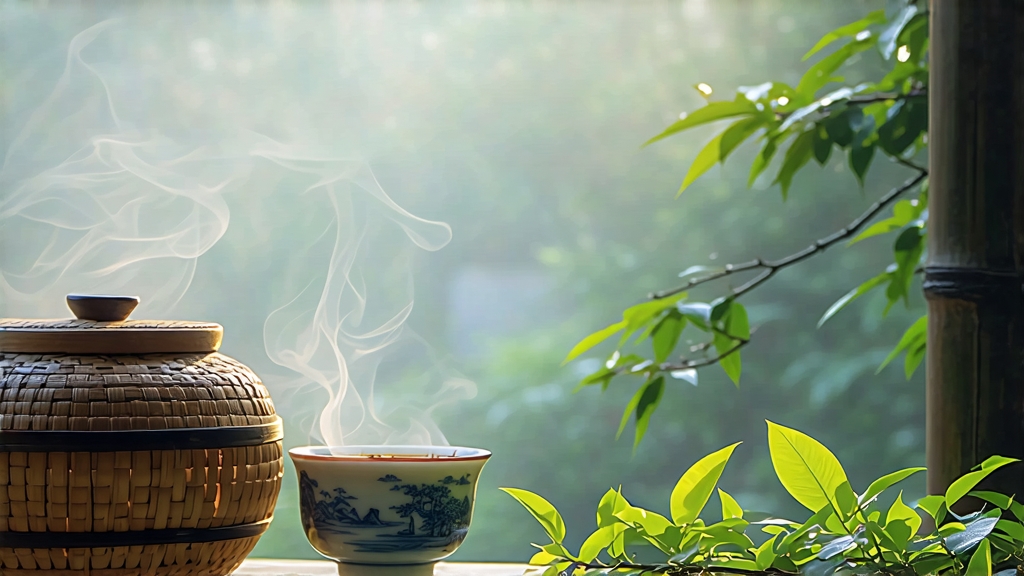
Tucked into the cloud-forests of central Taiwan, Alishan High-Mountain Oolong (阿里山高山乌龙) is the aromatic ambassador of the island’s lofty tea gardens. Rising between 1,000 and 1,400 m above sea level, the Alishan range traps cool, moist air that drifts in from the nearby Taiwan Strait. The perpetual veil of fog slows leaf growth, thickens cell walls, and concentrates amino acids, giving the tea its signature “gao shan yun”—the high-mountain rhyme that connoisseurs describe as a cool, ringing sweetness felt in the throat long after the cup is empty.
Historical roots
Oolong reached Taiwan in the mid-nineteenth century when Fujian immigrants carried Qing-xin (青心) cultivar cuttings across the strait. Alishan itself remained a forestry reserve until the 1970s, when new mountain roads allowed tea farmers to plant gardens among ancient cypress. The first Alishan Oolongs were lightly oxidized experiments aimed at the emerging Taipei tea houses; within two decades the style eclipsed the darker, roast-heavy Tieguanyin that had previously dominated Taiwan’s export market. Today Alishan Oolong is protected by both geographical indication (GI) and tribal land-rights agreements that limit acreage, preserving the fragile cloud-forest ecosystem.
Cultivar & terroir
Almost all authentic Alishan Oolong is made from the Qing-xin (TRES #12) bush, a slow-growing, small-leaf varietal that thrives in acidic, red laterite soil. Night temperatures can drop to 8 °C even in May; the diurnal swing of 15 °C prompts the plant to produce more L-theanine and fragrant volatiles such as geraniol and linalool. Farmers plant hedgerows of native bamboo and acacia to buffer monsoon winds, creating tiny micro-plots that are harvested by hand five times a year—though the spring and winter flushes are most prized.
Plucking standard
Only the “xiao kai mian” (small opening) standard is accepted: the apical bud plus the next three leaves, picked when the third leaf is still 30 % smaller than the second. This ratio guarantees the ideal balance of soluble sugars and polyphenols for the subsequent bruising step. Experienced pickers finish before 10 a.m., while dew still glistens, to prevent premature oxidation en route to the on-mountain factory.
Crafting the leaf: 24 hours of controlled transformation
- Solar withering: The leaves are spread 3 cm thick on bamboo trays and left under high-elevation sun for 20–30 min. UV-B radiation triggers enzymatic activity that later translates into floral aromatics.
- Indoor withering & tossing: Trays move onto waist-high racks in a climate-controlled room kept at 22 °C and 65 % RH. Every hour the leaves are gently tossed by hand—30 rotations clockwise, 30 counter-clockwise—bruising edge cells and initiating oxidation. This dance repeats 6–8 times through the afternoon and into the night.
- Oxidation arrest: When leaf edges turn jade-green with a 15 % reddish rim, the tea is deemed 25–30 % oxidized. A 260 °C drum roast lasting 90 sec kills the enzymes, locking in the bright, orchid fragrance.
- Rolling & balling: While still warm, the leaves enter a cloth-wrapped kneading machine that compresses them into tight hemispheres. Pressure is released every 3 min to prevent bitterness; the cycle repeats 30 times.
- Drying & sorting: A 90 °C conveyor oven reduces moisture to 3 %, after which stems and yellow flakes are removed by hand.
- Charcoal finish (optional): For “honey-style” Alishan, the semi-finished tea rests for 30 days, then spends 6 h over longan-wood charcoal at 80 °C. The gentle smoke adds a candied depth without masking the high-mountain lift.
Grades & market names
- Qing-xin Light: 20 % oxidation, no roast—lily, alpine herb.
- Medium Bake: 30 % oxidation, 3 h charcoal—custard apple, toasted almond.
- Deep Song: 35 % oxidation, 12 h charcoal—molasses, cedar, camphor.
- Winter Silk: harvested after first frost—honeyd